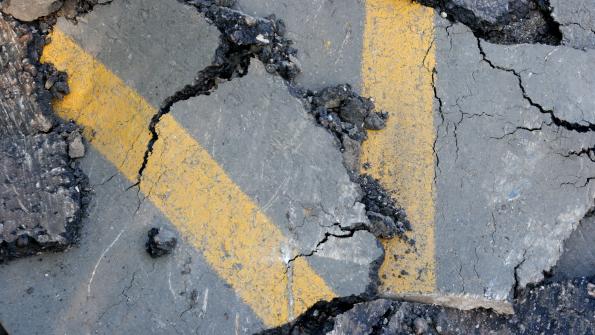How to best manage resources and road networks
 Many of our public agencies suffering from the same, chronic infrastructure problem: Rapidly deteriorating roadways, due to irresponsible management of limited maintenance budgets. However, public agencies can capitalize on best practices and create a data-driven approach to restore America’s failing local infrastructure once and for all.
Many of our public agencies suffering from the same, chronic infrastructure problem: Rapidly deteriorating roadways, due to irresponsible management of limited maintenance budgets. However, public agencies can capitalize on best practices and create a data-driven approach to restore America’s failing local infrastructure once and for all.
The first step involves changing mindset. Many agencies still employ a “worst-first” approach, prioritizing their most failed roads every year. This practice typically leads managers down a reactive path of patching potholes, unhappy motorists, and an ever-increasing maintenance and repair backlog.
If your agency doesn’t use a pavement management system (PMS) for road repair prioritization, consider the following three-strep approach. With the right mindset, this process is guaranteed to maximize your annual maintenance and repair budget, while optimizing conditions across your entire network.
Get familiar with the tools in your toolbox
There’s more than one way to fix a road.
Instead of using the same mill and overlay against the worst streets in your network each year, identify the available tools within the preventive, preservation, recycling and major maintenance categories, and then fill your toolbox! There’s an old saying: “Perform the right treatment, to the right road, and at the right time.” This simple yet powerful saying is the key to establishing longer service lives and saving taxpayer dollars.
To effectively build your toolbox, you must first learn of the various tools available. Reach out to your local contractor and use them as a resource. Ask about new treatments or technologies that may be worth evaluating for a given road based upon its climate, age or condition.
Leverage online resources such as RoadResource.org to help assess possible solutions. Now more than ever, there are many resources available to learn from others’ successes and failures. These resources will provide the confidence necessary to explore new, cost-effective solutions that can be added to your toolbox.
Get ahead of the curve
Plan for 40 years of life (or more).
Research, and my own independent analysis as a pavement professional over the past 20 years, show that deterioration will accelerate rapidly after the first three-quarters of a road’s lifespan. The best way to prevent rapid decline is to implement a cost-effective and data-driven plan, with treatments applied regularly, at the top of the deterioration curve.
Consider evaluating the lifecycle cost of each road; Often, a preservation plan can save hundreds of thousands of taxpayer dollars. After all, due to inflation and maintenance repairs, a dollar today is worth more than a dollar tomorrow!
#3 Understand the bigger picture
Determine each project’s impact on your overall network. Prioritize accordingly.
Across the U.S., the highest performing agencies have one thing in common: They prioritize projects based on network impact. For many, a robust PMS is the best method for evaluating condition, guiding decisions, prioritizing projects, and accommodating budgets. However, no pavement management program, no problem! Simply consider the following three key performance indicators for maximum impact:
- Equivalent Annualized Cost: Compare treatment costs by evaluating life extension and cost per square yard. It’s an apples-to-apples cost comparison.
- Remaining Service Life: Evaluate your yearly maintenance plan and its effect on network life. Are you gaining or losing life with this year’s plan?
- Cost-Benefit Value Analysis: Quantify the impact of each road project. Which projects will give you the “biggest bang for your buck?”
James Golden III has served as a pavement management specialist for over 20 years. He helps public agencies improve roadway conditions through data-driven, standardized pavement management blueprint. James is the Founder and CEO of Pavement Management Group and (PMG) and JG3.




















